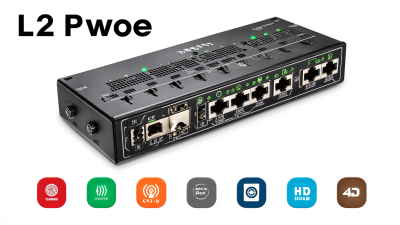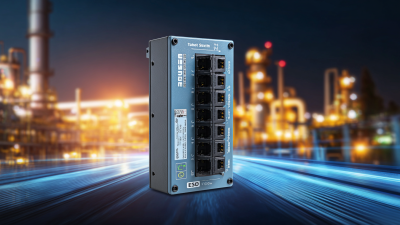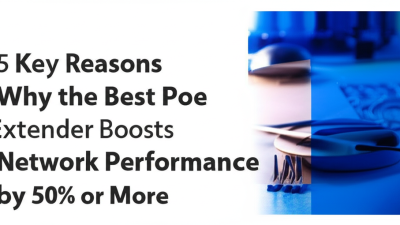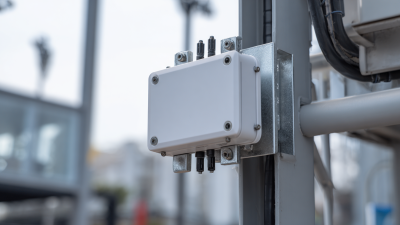
- hasivo@hasivo.com
- Mon - Sat at 7:00AM to 9:00PM
Leave Your Message

In an era where efficient power management is crucial for the seamless operation of network devices, the Poe Injector has emerged as a pivotal component in modern networking solutions. This article aims to provide a comprehensive overview of Poe Injectors, exploring their significance in powering various devices such as IP cameras, VoIP phones, and Wireless Access Points without the clutter of multiple cables. By consolidating data and power over a single Ethernet line, Poe Injectors not only simplify installations but also enhance flexibility and scalability in network design. Whether you're a network professional or a DIY enthusiast, understanding the functionality and benefits of Poe Injectors is essential for optimizing your network infrastructure. Join us as we delve into the intricacies of Poe Injectors, shedding light on their types, applications, and the efficiency they bring to powering your network devices.

Power over Ethernet (PoE) technology has revolutionized how we supply power to network devices, allowing both power and data to be transmitted over standard Ethernet cables. With the recent advancements in PoE standards, particularly the IEEE 802.3bt standard, there are significant improvements in efficiency, which cater to the increasing demands of edge devices in modern networks. This standard not only enhances power delivery capabilities but also ensures that devices are powered more intelligently, optimizing energy consumption across various systems.
Tips for utilizing PoE effectively include ensuring that your network design accommodates devices requiring different PoE classes, as some devices may need more power than others. It’s also essential to choose high-quality PoE injectors that comply with the latest standards to enhance compatibility and safety. For instance, those looking to power smart home devices can benefit from using PoE splitters, which allow devices that might not inherently support PoE to still receive power seamlessly.
Moreover, with the growing trend of integrating Building Management Systems, leveraging PoE solutions can streamline controls for lighting, HVAC, and security systems, ultimately transforming any setup into a smart building framework. Understanding the nuances of PoE standards will not only help in optimizing your network's performance but also in future-proofing your infrastructure as the demand for connected devices continues to rise.
When assessing the power requirements of your network devices, it's essential to consider several factors to ensure optimal performance and efficiency. Each device, such as IP cameras, wireless access points, and VoIP phones, can have varying power needs based on its functionality and usage. Understanding the power consumption specifications of each device allows for accurate calculations, ensuring that your Power over Ethernet (PoE) infrastructure can deliver the necessary wattage without overloading your network.

Moreover, it's crucial to differentiate between the various PoE standards, which dictate the maximum power that can be delivered. The IEEE 802.3af standard provides up to 15.4 watts per port, while 802.3at (PoE+) increases this limit to 30 watts, and 802.3bt (PoE++) can provide up to 60 watts or more. By assessing the requirements before installation, network administrators can select the appropriate PoE injectors or switches, guaranteeing that all devices function efficiently without risking downtime or damage due to insufficient power supply.
Proper planning ensures a reliable network capable of supporting the ever-growing demands of modern technology.
When considering the power supply for network devices, choosing between PoE injectors and PoE switches is crucial for ensuring optimal efficiency. PoE injectors are cost-effective solutions for adding PoE capabilities to non-PoE switches, allowing users to power devices like IP cameras and access points without extensive rewiring. On the other hand, PoE switches come with integrated power management, making them suitable for larger networks where multiple devices require power simultaneously.
**Tip:** If your setup includes a few devices spread out across different locations, a PoE injector may be the more economical choice. However, for environments with a high density of PoE devices, investing in a PoE switch can reduce clutter and streamline installation.
Another factor to consider is the power output. PoE injectors are often limited to a specific wattage per port, while switches can vary dramatically in their power capabilities. High-performance switches not only manage efficient power distribution but also offer features like VLANs and network monitoring.
**Tip:** Always evaluate the total power requirements of your devices before deciding. This ensures you choose the right equipment to handle current needs as well as future expansions.
| Device Type | Power Output (W) | Max Ports | Efficiency (%) | Cost (USD) |
|---|---|---|---|---|
| PoE Injector | 30 | 1 | 90 | 50 |
| PoE Switch | 65 | 8 | 95 | 150 |
| High-Power PoE Injector | 60 | 1 | 88 | 75 |
| Managed PoE Switch | 150 | 24 | 93 | 300 |
Implementing Power over Ethernet (PoE) technology is a strategic move for organizations aiming to optimize their network infrastructure while simultaneously reducing operational costs. According to a recent report by MarketsandMarkets, the global PoE market is projected to grow from $1.09 billion in 2020 to $3.45 billion by 2025, reflecting a compound annual growth rate (CAGR) of 25.0%. This rapid growth highlights a significant shift towards more energy-efficient network solutions that minimize the need for additional electrical installations.
One of the primary advantages of PoE is its ability to deliver both data and power through a single cable, eliminating the need for separate power sources for devices like IP cameras, access points, and VoIP phones. Intel's research indicates that PoE can save businesses up to 30% on installation costs, as it reduces labor and material expenses associated with electrical wiring. Furthermore, the deployment of PoE not only streamlines installations but also facilitates centralized management of power consumption, allowing organizations to monitor energy usage more effectively and make adjustments to enhance efficiency.
When it comes to ensuring the long-term performance of Power over Ethernet (PoE) devices, regular monitoring and maintenance are essential. Implementing robust network monitoring tools can help in tracking the performance of PoE injectors and powered devices. These tools allow administrators to check voltage levels, power consumption, and overall network health. By keeping an eye on these metrics, potential issues can be identified before they escalate, ensuring that devices continue to operate smoothly without interruption.

In addition to monitoring, routine maintenance is crucial for sustaining PoE performance. This includes regularly inspecting cables and connections for wear and tear, which can affect power delivery. Cleaning dust and ensuring that ventilation is adequate will also prevent overheating, a common issue for PoE injectors. Furthermore, staying updated with firmware and software upgrades will enhance security and functionality, allowing devices to perform optimally over time. By adopting these monitoring and maintenance practices, network administrators can significantly improve the reliability and efficiency of their PoE systems.





